Dual isolated batteries have been a fixture of overland vehicles since the first courageous souls ventured into the heart of Australia and Africa decades ago.
Modern camp life requires an endless list of electronics and gadgets that are all but essential, and these devices all require ever-increasing amounts of power. These electronics must be powered while also ensuring the vehicle’s starter battery is not compromised to avoid the worst-case scenario of a vehicle that can’t be started.
In recent years, huge advances in solar, lithium batteries, and charge controllers has led to an explosion of options on the market, with each boasting an ever-increasing list of features. While correctly designing and building a modern electronics setup can seem daunting, it’s now easier than ever to DIY a modern array that will keep your devices powered and, above all, ensure your engine will start.

What are dual isolated batteries?
As the name implies, dual isolated batteries refers to an electrical system that at its heart uses two batteries to power the vehicle and additional electronics. The original vehicle battery remains unchanged, powering the vehicle, charging directly from the alternator, and, most importantly, starting the engine. For this reason, this battery is typically referred to as the “starter.”
The second battery is used to power any number of additional electronics such as fridges, camp lights, chargers, water pumps, inverters, and modern gadgets like laptops, tablets, and even satellite internet, just like in a house. For this reason, the second battery is typically referred to as the “house” battery.
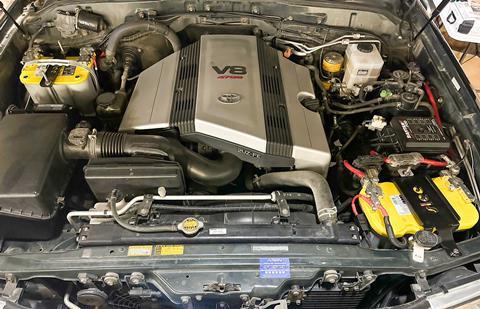
It’s common to use more than one house battery in a system to increase capacity, though in essence they function like one large battery. For this reason, it’s common to refer to them as one house battery, even if there is physically more than one.
When the vehicle engine is running, both the starter and house batteries are charged from the alternator, ensuring there will be plenty of power for devices once the engine is switched off. Once that happens, it is essential to ensure the house battery and all devices it is powering are isolated (a fancy way to say disconnected) from the starter battery. The ensures the starter battery will always remain fully charged and ready to start the engine, even in the event that the house battery is completely depleted.
Are dual batteries really needed?
Many are skeptical when an outfitter insists on an elaborate dual-battery setup, and it’s not until their fridge completely depletes the starter battery and they find themselves stranded in camp before they begin to investigate further.

When I drove a little two-door Wrangler from Alaska to Argentina, my extremely tight budget forced me to hit the road with only the bare essentials. Although it would have been nice in the heat and humidity of the jungles of Panama and Colombia, I didn’t even have a fridge in that little Jeep.
With no camp lights, chargers, a water pump or an inverter in the Jeep, I didn’t use any power from the starter battery when the engine was switched off, which meant I simply didn’t need a second battery. Because I went without a fridge, I was also able to go without a second battery, keeping the vehicle simpler, lighter, and within my tiny budget.
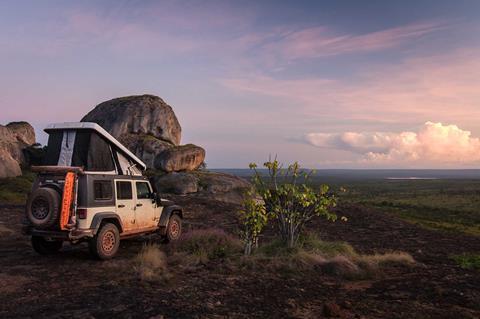
When designing my much more luxurious four-door Wrangler to circumnavigate Africa, I specifically wanted creature comforts like a fridge, running water, and interior camp lights so I could thoroughly enjoy my years on the road rather than merely tolerating them.
Because I added multiple devices that required power when the engine was switched off, a dual-battery setup was mandatory to prevent the starter being completely drained in the wilds. This vehicle became the exact opposite of my previous Jeep. Because I added equipment that required more power, I was also required to add a second battery and associated systems. This significantly increased the complexity, weight, and cost of the finished vehicle.
Whether or not your setup and vehicle require dual batteries depends entirely on how much power you use in camp when the engine is switched off. On one hand, if you live the simple life of no power requirements, it’s unlikely you would see benefit from a second battery. On the other hand, if you add a fridge and plan to charge a few devices while in camp, dual batteries become essential.
How does the system work?
The simplest form of isolated dual batteries has been heavily used by OG overlanders since at least the ’60s, if not earlier. A large solenoid—a fancy type of switch—is used to join two identical batteries together in parallel whenever the engine is running.
This means the alternator charges them both directly as if they’re one giant battery. Once the engine is switched off and power is cut to the solenoid, the batteries are disconnected, leaving the starter battery separate from the devices that will consume power from the house battery.
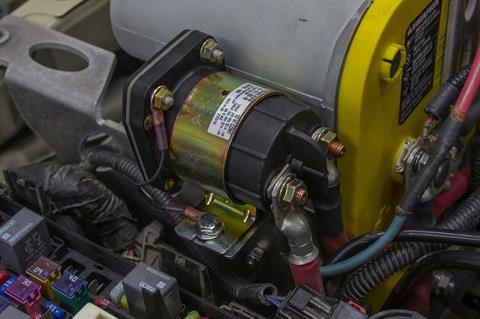
While this system is simple and it works, there are two major downsides associated with going old school. Because the two batteries are directly connected together with no intelligence, the two batteries must be identical, both in chemistry and capacity. This ensures both batteries will charge correctly and current won’t rapidly flow between them when they are connected together, possibly causing a system overload.
Furthermore, connecting two batteries directly to the alternator is not the ideal way to charge. Alternators are not designed to charge deeply depleted batteries, and it can require many hours of driving to restore the house battery to full charge after a night of running a fridge.
Modern problems require modern solutions, and dual batteries have not been overlooked in the quest to design and build the ultimate overland vehicle. Instead of joining batteries together with a giant solenoid and relying on the alternator directly to charge the house battery, modern systems use a DC-to-DC charger to top up the house battery.
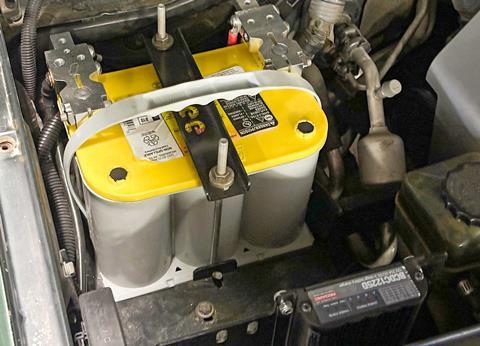
This intelligent piece of electronics adapts the power coming from the alternator to best suit what the house battery requires based on state of charge, temperature, and battery type. In this way constant current is drawn from the alternator, and with the additional information the house battery is charged as quickly and efficiently as possible.

DC-to-DC chargers also have built-in isolation and disconnect the house battery from the starter when the engine is switched off, eliminating the need for a large solenoid and associated wiring.
Battery chemistry
The use of a modern DC-to-DC charger also opens up the possibility of modern battery chemistries. While lead acid, gel, and AGM batteries have been used for decades, their size, weight,and slow rate of charge have always been limitations.
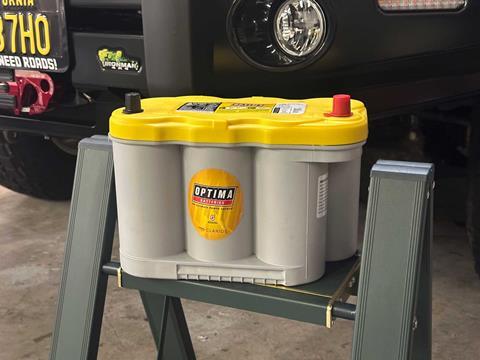
Lead acid batteries are also notorious for literally vibrating apart on the corrugations found while overlanding in remote parts of the world.
Modern lithium batteries of identical capacity are half the size and weight of traditional batteries, meaning you can have twice the power capacity in the same weight and size budget.
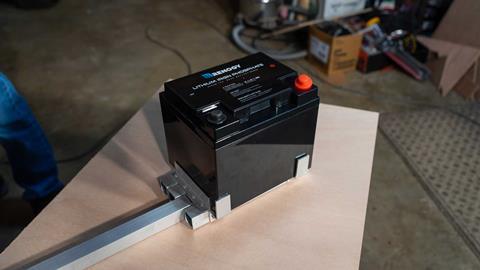
Lithium can also be more deeply discharged while still providing usable power, and lithium batteries accept charge much faster. With prices falling every week, lithium is now more affordable than ever, and most if not all new overland vehicle builds employ lithium for the house battery.

Money (or power) for nothing
With the price of solar also dropping dramatically in recent years, the addition of a solar panel or two on the roof of an overland vehicle is an easy way to get power for (almost) nothing.
While it might be tempting to take the easy route, it’s important to remember solar panels can never be directly connected to any battery. Solar panels generate power in a way that is not intended go directly into a battery, and doing so will cause permanent battery damage due to overcharging.
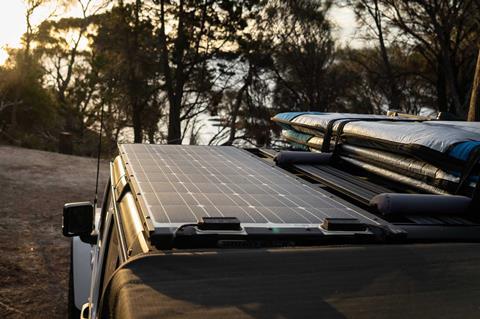
Solar panels must always be connected through a solar charge controller, a device that monitors the state of battery charge and charges to capacity only when required. All modern MPPT solar charge controllers use built-in algorithms to charge batteries as quickly and efficiently as possible and can be configured for different battery types.
21st century dual batteries
In recent years dual batteries have gone next level, with a new range of hyper-intelligent charge controllers creating an all-in-one solution that does more than ever before.
As one example, recent chargers from Renogy Solar combine a DC-DC charger, automatic isolator, and MPPT solar charge controller into one unit with no moving parts. While driving on sunny days the unit prioritizes charging from solar to reduce load on the alternator, and when the driving is finished and the house battery is fully charged it will trickle-charge the starter battery from solar while ensuring the starter is isolated and cannot be discharged.
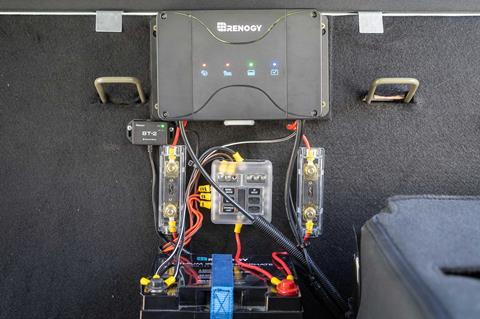
To reduce load on the engine immediately after starting, the DC-to-DC charging feature has a built-in 15-second delay, allowing the engine time to find its steady-state idle before introducing extra load on the alternator.
Modern units like these continually monitor all power flowing through the system and provide accurate measurement of battery charge level as well as power flowing into the system from both the alternator and solar, as well as power flowing out of the battery to any powered-on electronics.
Bottom line—don’t get stranded
In recent years fridges have quickly become a must-have item, and it’s almost a given that each traveler has his or her own phone and power-hungry laptop. Throw in a few lights at camp, a cell phone booster or Starlink terminal, and the power needs of the modern overlander are higher than ever before.
While it might be possible to limit charging of devices to a strict schedule only if the engine is running, this is a dangerous game to play. With all power being taken from the starter battery, it’s only a matter of time before a device is left on or an unseasonably hot night causes the fridge to run more than usual.
With a depleted starter battery, spoiled food and warm drinks will be a minor inconvenience, but a vehicle that can’t start under its own power could spell disaster.
Sources
Optima
optimabatteries.com
Redarc
redarcelectronics.com/us
Renogy
renogy.com
Access More Great Stories!
This article originally appeared in OVR Issue 03. For more informative articles like this, consider subscribing to OVR Magazine in print or digital versions here. You can also find the print edition of OVR at your local newsstand by using our Magazine Finder.





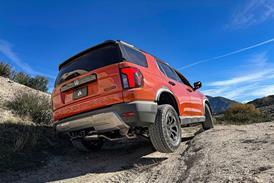
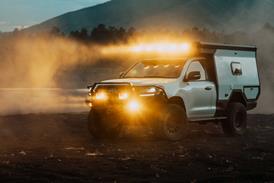
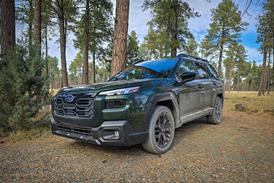


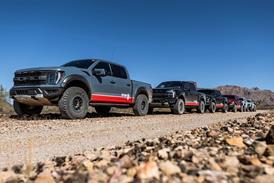



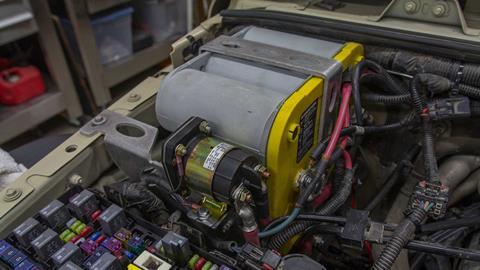






No comments yet